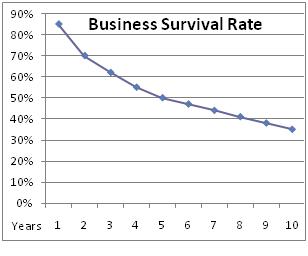 Did you know that 90% of businesses fail during their first year? This is typically due to poor planning or no planning. Entrepreneurs often just jump in and start doing business without a real plan. Without knowing how to finance their business, without knowing what the competition really looks like or who their primary competition is.
Did you know that 90% of businesses fail during their first year? This is typically due to poor planning or no planning. Entrepreneurs often just jump in and start doing business without a real plan. Without knowing how to finance their business, without knowing what the competition really looks like or who their primary competition is.
Over the next few weeks we are going to walk through the 8 steps of developing a successful Strategic Plan. Effective planning will not only improve your probability of success, it will help you gain control of your time and finances by directing both of these important resources to the most important areas.
A good plan always begins with RESEARCH:
It is important to understand your business, market, business conditions, trends in your business, and what your competition is doing. Spending time gathering and documenting this information for your team to review prior to planning is the first step in developing a quality plan. Often-times teams skip this important step and miss some critical trends in their business or industry that could cause you to choose a different path all together.
How do you conduct this research?
- Gather business journals specific to your business and review the last 3 to 6 months publications for articles that speak to business trends, recent successes, new products or regulation.
- Use Google to search the industry and emerging topics in your business. Review and capture articles and trends that will help your team understand what new and emerging trends are in your business.
- Shop your competition. Visit them as a customer if appropriate. Call and get their latest products and pricing. Determine how they support and service their products. Review their web sites and determine how easy it is to do business with them and how they are leveraging technology to communicate with and support their customers.
- Review your own operating costs, your own capabilities and your own customer satisfaction.
- Conduct customer focus groups. This doesn’t have to be a costly endeavor. You can simply engage 3 to 5 clients and prospects in a conversation about their business needs. Determine what they like and dislike about your products. Learn what would cause them to purchase a product from your competitor. Understand what their definition of support and convenience is.
These are just a few ideas to get you started researching your business and industry. Capture these findings and share them with your team in advance of planning.
